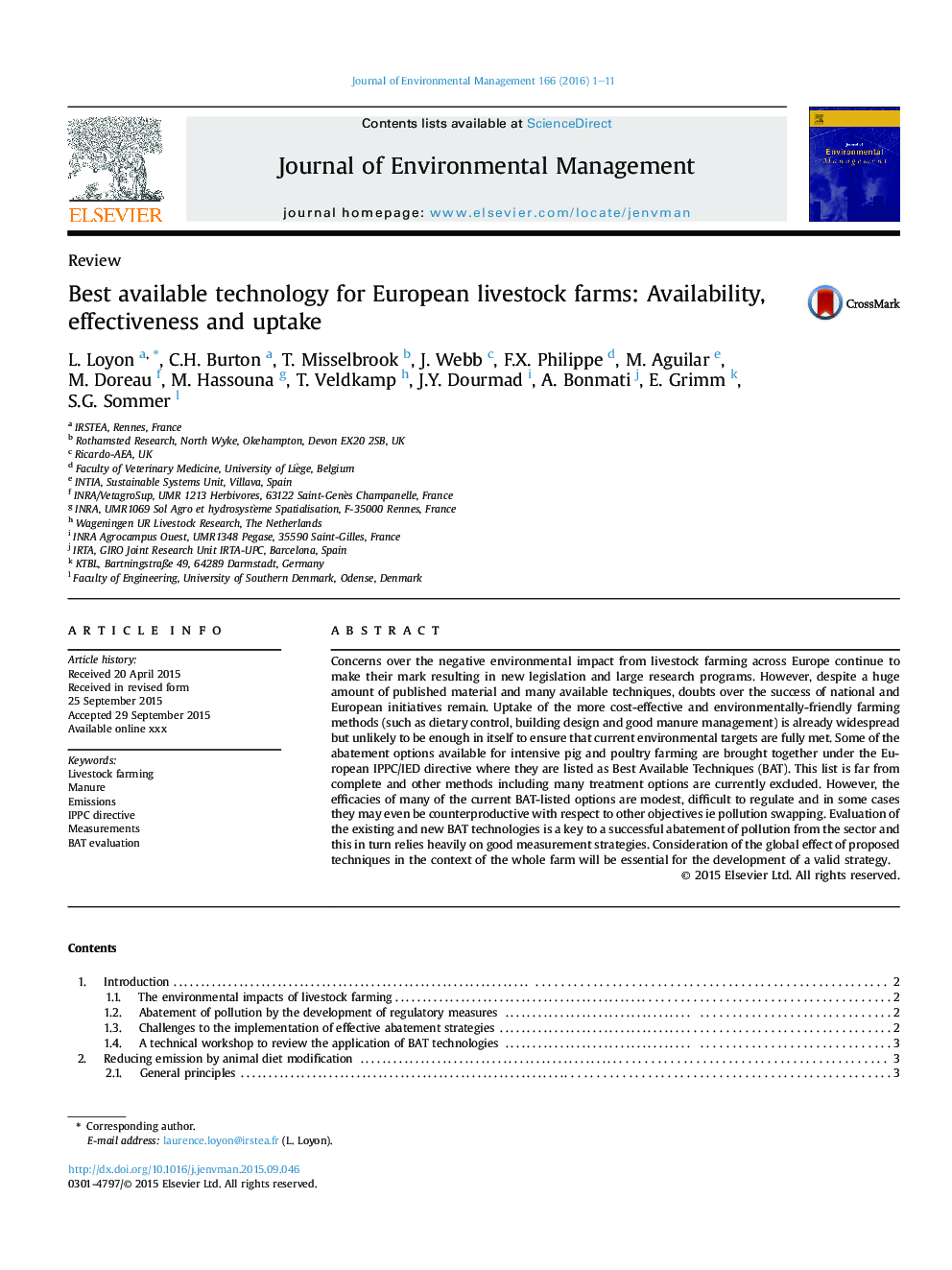| Article ID | Journal | Published Year | Pages | File Type |
|---|---|---|---|---|
| 7481218 | Journal of Environmental Management | 2016 | 11 Pages |
Abstract
Concerns over the negative environmental impact from livestock farming across Europe continue to make their mark resulting in new legislation and large research programs. However, despite a huge amount of published material and many available techniques, doubts over the success of national and European initiatives remain. Uptake of the more cost-effective and environmentally-friendly farming methods (such as dietary control, building design and good manure management) is already widespread but unlikely to be enough in itself to ensure that current environmental targets are fully met. Some of the abatement options available for intensive pig and poultry farming are brought together under the European IPPC/IED directive where they are listed as Best Available Techniques (BAT). This list is far from complete and other methods including many treatment options are currently excluded. However, the efficacies of many of the current BAT-listed options are modest, difficult to regulate and in some cases they may even be counterproductive with respect to other objectives ie pollution swapping. Evaluation of the existing and new BAT technologies is a key to a successful abatement of pollution from the sector and this in turn relies heavily on good measurement strategies. Consideration of the global effect of proposed techniques in the context of the whole farm will be essential for the development of a valid strategy.
Related Topics
Physical Sciences and Engineering
Energy
Renewable Energy, Sustainability and the Environment
Authors
L. Loyon, C.H. Burton, T. Misselbrook, J. Webb, F.X. Philippe, M. Aguilar, M. Doreau, M. Hassouna, T. Veldkamp, J.Y. Dourmad, A. Bonmati, E. Grimm, S.G. Sommer,
